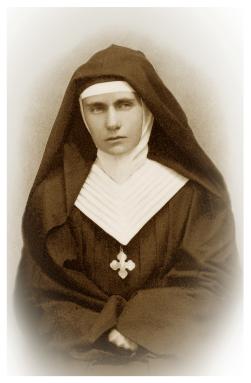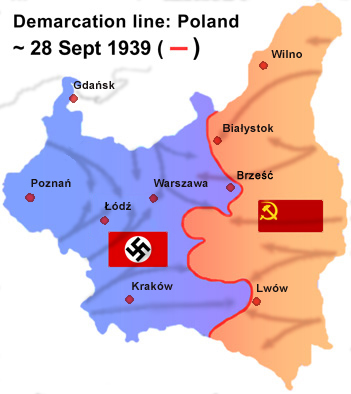|
Michał Piaszczyński
Michael Piaszczynski (1 November 1885 – 18 December 1940) was a Polish Catholic priest who was arrested by the Nazis and killed at Sachsenhausen concentration camp. As a martyr he was beatified by Pope John Paul II on 13 June 1999. Life Michael Piaszczynski was born in Łomża, Poland, the son of Ferdynand and Anna Zientara. He was ordained to the priesthood on 13 June 1911. He was parish priest in Mikaszówka, Poland for a year before moving to Fribourg to earn a doctorate in philosophy. Father Piaszczynski served as a chaplain to a colony of Polish miners in France. From 1919 to 1935, he served at the Theological Seminary in the Diocese of Łomża and as a faculty member of the Piotr Skarga Secondary School in Łomża. Arrest and Death In September 1939, Father Piaszczynski became director of St. Casimir Secondary School in Sejnach. He was arrested on 7 April 1940 during the Nazi persecution of the Catholic Church in Poland and was moved to Sachsenhausen on 3 May 1940. During ... [...More Info...] [...Related Items...] OR: [Wikipedia] [Google] [Baidu] |
Martyr
A martyr (, ''mártys'', "witness", or , ''marturia'', stem , ''martyr-'') is someone who suffers persecution and death for advocating, renouncing, or refusing to renounce or advocate, a religious belief or other cause as demanded by an external party. In the martyrdom narrative of the remembering community, this refusal to comply with the presented demands results in the punishment or execution of an actor by an alleged oppressor. Accordingly, the status of the 'martyr' can be considered a posthumous title as a reward for those who are considered worthy of the concept of martyrdom by the living, regardless of any attempts by the deceased to control how they will be remembered in advance. Insofar, the martyr is a relational figure of a society's boundary work that is produced by collective memory. Originally applied only to those who suffered for their religious beliefs, the term has come to be used in connection with people killed for a political cause. Most martyrs are conside ... [...More Info...] [...Related Items...] OR: [Wikipedia] [Google] [Baidu] |
108 Martyrs Of World War II
The 108 Martyrs of World War II, known also as the 108 Blessed Polish Martyrs ( pl, 108 błogosławionych męczenników), were Roman Catholics from Poland killed during World War II by Nazi Germany. Their liturgical feast day is 12 June. The 108 were beatified on 13 June 1999 by Pope John Paul II in Warsaw, Poland. The group comprises 3 bishops, 79 priests, 7 male religious, 8 female religious, and 11 lay people. There are two parishes named for the 108 Martyrs of World War II in Powiercie in Koło County, and in Malbork, Poland. List of Martyrs Bishops # Antoni Julian Nowowiejski (1858–1941 KL Soldau), bishop # Leon Wetmański (1886–1941 KL Soldau), bishop # Władysław Goral (1898–1945 KL Sachsenhausen), bishop Priests # Adam Bargielski, priest from Myszyniec (1903–1942 KZ Dachau) # Aleksy Sobaszek, priest (1895–1942 KL Dachau) # Alfons Maria Mazurek, Carmelite friar, prior, priest (1891–1944, shot by the Gestapo) # Alojzy Liguda, Society of the Divine W ... [...More Info...] [...Related Items...] OR: [Wikipedia] [Google] [Baidu] |
Polish Beatified People
Polish may refer to: * Anything from or related to Poland, a country in Europe * Polish language * Poles, people from Poland or of Polish descent * Polish chicken * Polish brothers (Mark Polish and Michael Polish, born 1970), American twin screenwriters Polish may refer to: * Polishing, the process of creating a smooth and shiny surface by rubbing or chemical action ** French polishing, polishing wood to a high gloss finish * Nail polish * Shoe polish * Polish (screenwriting), improving a script in smaller ways than in a rewrite See also * * * Polonaise (other) A polonaise ()) is a stately dance of Polish origin or a piece of music for this dance. Polonaise may also refer to: * Polonaises (Chopin), compositions by Frédéric Chopin ** Polonaise in A-flat major, Op. 53 (french: Polonaise héroïque, ... {{Disambiguation, surname Language and nationality disambiguation pages ... [...More Info...] [...Related Items...] OR: [Wikipedia] [Google] [Baidu] |
108 Blessed Polish Martyrs
The 108 Martyrs of World War II, known also as the 108 Blessed Polish Martyrs ( pl, 108 błogosławionych męczenników), were Roman Catholics from Poland killed during World War II by Nazi Germany. Their liturgical feast day is 12 June. The 108 were beatified on 13 June 1999 by Pope John Paul II in Warsaw, Poland. The group comprises 3 bishops, 79 priests, 7 male religious, 8 female religious, and 11 lay people. There are two parishes named for the 108 Martyrs of World War II in Powiercie in Koło County, and in Malbork, Poland. List of Martyrs Bishops # Antoni Julian Nowowiejski (1858–1941 KL Soldau), bishop # Leon Wetmański (1886–1941 KL Soldau), bishop # Władysław Goral (1898–1945 KL Sachsenhausen), bishop Priests # Adam Bargielski, priest from Myszyniec (1903–1942 KZ Dachau) # Aleksy Sobaszek, priest (1895–1942 KL Dachau) # Alfons Maria Mazurek, Carmelite friar, prior, priest (1891–1944, shot by the Gestapo) # Alojzy Liguda, Society of t ... [...More Info...] [...Related Items...] OR: [Wikipedia] [Google] [Baidu] |
People Who Died In Sachsenhausen Concentration Camp
A person ( : people) is a being that has certain capacities or attributes such as reason, morality, consciousness or self-consciousness, and being a part of a culturally established form of social relations such as kinship, ownership of property, or legal responsibility. The defining features of personhood and, consequently, what makes a person count as a person, differ widely among cultures and contexts. In addition to the question of personhood, of what makes a being count as a person to begin with, there are further questions about personal identity and self: both about what makes any particular person that particular person instead of another, and about what makes a person at one time the same person as they were or will be at another time despite any intervening changes. The plural form "people" is often used to refer to an entire nation or ethnic group (as in "a people"), and this was the original meaning of the word; it subsequently acquired its use as a plural form of ... [...More Info...] [...Related Items...] OR: [Wikipedia] [Google] [Baidu] |
People From Łomża
A person ( : people) is a being that has certain capacities or attributes such as reason, morality, consciousness or self-consciousness, and being a part of a culturally established form of social relations such as kinship, ownership of property, or legal responsibility. The defining features of personhood and, consequently, what makes a person count as a person, differ widely among cultures and contexts. In addition to the question of personhood, of what makes a being count as a person to begin with, there are further questions about personal identity and self: both about what makes any particular person that particular person instead of another, and about what makes a person at one time the same person as they were or will be at another time despite any intervening changes. The plural form " people" is often used to refer to an entire nation or ethnic group (as in "a people"), and this was the original meaning of the word; it subsequently acquired its use as a plural f ... [...More Info...] [...Related Items...] OR: [Wikipedia] [Google] [Baidu] |
1940 Deaths
Year 194 ( CXCIV) was a common year starting on Tuesday (link will display the full calendar) of the Julian calendar. At the time, it was known as the Year of the Consulship of Septimius and Septimius (or, less frequently, year 947 ''Ab urbe condita''). The denomination 194 for this year has been used since the early medieval period, when the Anno Domini calendar era became the prevalent method in Europe for naming years. Events By place Roman Empire * Emperor Septimius Severus and Decimus Clodius Septimius Albinus Caesar become Roman Consuls. * Battle of Issus: Septimius Severus marches with his army (12 legions) to Cilicia, and defeats Pescennius Niger, Roman governor of Syria. Pescennius retreats to Antioch, and is executed by Severus' troops. * Septimius Severus besieges Byzantium (194–196); the city walls suffer extensive damage. Asia * Battle of Yan Province: Warlords Cao Cao and Lü Bu fight for control over Yan Province; the battle lasts for over 100 ... [...More Info...] [...Related Items...] OR: [Wikipedia] [Google] [Baidu] |
1885 Births
Events January–March * January 3– 4 – Sino-French War – Battle of Núi Bop: French troops under General Oscar de Négrier defeat a numerically superior Qing Chinese force, in northern Vietnam. * January 4 – The first successful appendectomy is performed by Dr. William W. Grant, on Mary Gartside. * January 17 – Mahdist War in Sudan – Battle of Abu Klea: British troops defeat Mahdist forces. * January 20 – American inventor LaMarcus Adna Thompson patents a roller coaster. * January 24 – Irish rebels damage Westminster Hall and the Tower of London with dynamite. * January 26 – Mahdist War in Sudan: Troops loyal to Mahdi Muhammad Ahmad conquer Khartoum; British commander Charles George Gordon is killed. * February 5 – King Leopold II of Belgium establishes the Congo Free State, as a personal possession. * February 9 – The first Japanese arrive in Hawaii. * February 16 – Charles Dow ... [...More Info...] [...Related Items...] OR: [Wikipedia] [Google] [Baidu] |
World War II Casualties Of Poland
Around 6 million Polish citizens perished during World War II: about one fifth of the pre-war population. Most were civilian victims of the war crimes and crimes against humanity during the occupation by Nazi Germany and the Soviet Union. Statistics for Polish World War II casualties are divergent and contradictory. This article provides a summarization of these estimates of Poland's human losses in the war and their causes. The official Polish government report on war damages prepared in 1947 put Poland's war dead at 6,028,000; 3.0 million ethnic Poles and 3.0 million Jews not including losses of Polish citizens from the Ukrainian and Belarusian ethnic groups. This figure was disputed when the communist system collapsed by the Polish historian Czesław Łuczak who put total losses at 6.0 million; 3.0 million Jews, 2.0 million ethnic Poles, and 1.0 million Polish citizens from the other ethnic groups not included in the 1947 report on war damages.Materski and Szarota page 16 ... [...More Info...] [...Related Items...] OR: [Wikipedia] [Google] [Baidu] |
The Holocaust In Poland
The Holocaust in Poland was part of the European-wide Holocaust organized by Nazi Germany and took place in German-occupied Poland. During the genocide, three million Polish Jews were murdered, half of all Jews murdered during the Holocaust. The Holocaust in Poland was marked by the construction of death camps by Nazi Germany, German use of gas vans, and mass shootings by German troops and their Ukrainian and Lithuanian auxiliaries. The extermination camps played a central role in the extermination both of Polish Jews, and of Jews whom Germany transported to their deaths from western and southern Europe. Every branch of the sophisticated German bureaucracy was involved in the killing process, from the interior and finance ministries to German firms and state-run railroads. Approximately 98 percent of Jewish population of Nazi-occupied Poland during the Holocaust were killed. About 350,000 Polish Jews survived the war; most survivors never lived in Nazi-occupied Poland, bu ... [...More Info...] [...Related Items...] OR: [Wikipedia] [Google] [Baidu] |


_1938.jpg)

